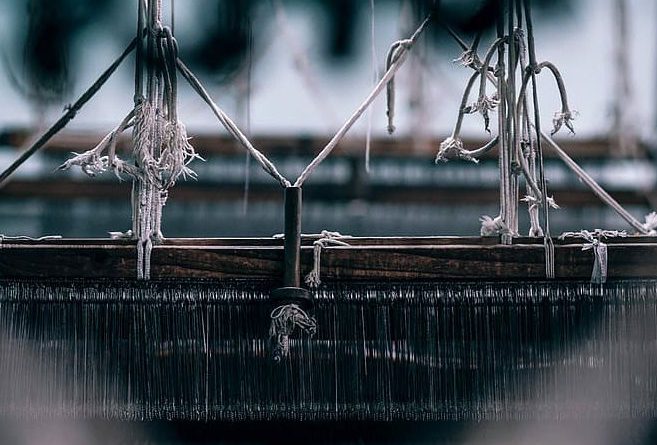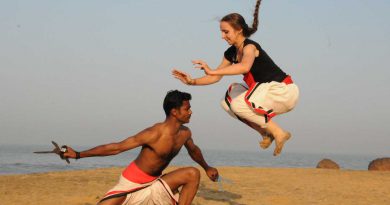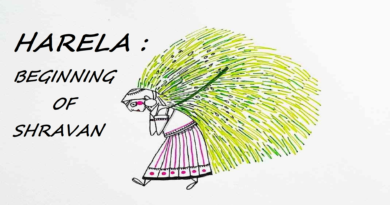Benares Weaving Industries – A Glorious Journey Of Varanasi
Varanasi, also known as Benares, or Kashi, is a city on the banks of the river Ganges in Uttar Pradesh, India. It is 320 kilometers (200 mi) south-east of the state capital, Lucknow, and 121 kilometers (75 mi) east of Allahabad. Especially, a major religious hub in India. It is the holiest of the seven sacred cities (Sapta Puri) in Hinduism and Jainism. It also played an important role in the development of Buddhism and Ravidassia.
Traditional etymology links “Varanasi” to the names of two Ganges tributaries forming the city’s borders: Varuna, still flowing in northern Varanasi, and Assi, today a small stream in the southern part of the city, near Assi Ghat. The old city is located on the northern shores of the Ganges, bounded by Varuna and Assi.
The purpose of this article is not to glorify the ghats and temples of Varanasi which is a great tourist attraction. But to strike that chamber of your heart filled with love and respect for its weaving industry. The Benares Weaving Industry is the very essence of Varanasi but is slowly degrading with time.
Importance Of Varanasi In Ancient Times :
The city is equally important as a brocade-weaving center throughout the country. The weaving industry, which flourished during the Vedic period. Moreover, touched its peak at the time of the Mughal period. Basically, explains how the act of weaving was a part and parcel of the life of the Banarasi. Whether it is the religious activity or earning of livelihood for the population. The weaving activity surpassed all other occupations. From a historical perspective, the textile industry has found a place. Begin from rig Vedic literature to post-independent India.
Since the Rig Vedic times, we hear about several kinds of textiles among which figures out the cloth of gold1 (the Hiranya) as a distinguished type. The god in their resplendent grandeur wear it, as they drive in their stately chariots. The Hiranya cloth has usually interpreted as the earliest equivalent for the present-day zari work or the kimkhab (brocades). We also find a specific reference to embroidery in the Vedic literature. The historical evidence depicts that the Banaras weaving industry reached its peak during the Mughal period. Due to the patronage of the Mughal emperor like Akbar. From the Akbar period onwards, we begin to get an uninterrupted account of the zari work. Moreover, brocades through the Mughal and Rajasthani painting.
It is significant to note that in the sixteenth century the old designs abruptly came to an end. We find from the contemporary paintings that wholesale-personalized motifs introduced. Although modified to the Indian taste. More emphasis was on floral designs. For example, the ancient animal and bird motifs are given up for good. Additionally, there was an influx of Persian motifs. Due to the influence and importance of Persian masters in the court of emperor Akbar; Ghias Naqshaband. Being the greatest Persian master among them to the royal atelier of Akbar.
Post – Mughal Period Traveler’s word on the silk industry
George Viscount Valentia, in his travel-account, furnished some interesting information about Banaras textiles in the early 19th century. Also, Valentia held a Durbar in Banaras. Some textile traders also attended the Durbar. It displayed some very good examples of zari and brocades. Valentia remarks that the brocades showed close patterns and also quite expensive. So, worn only on important occasions. Valentia rightly observed that the prosperity of the Banaras people mainly rested on its brocades, zari manufacture, and trade. As these textiles were popular items of export to Europe. The description of Valentia not only provided the historical existence of the silk industry of Banaras. But also explained how the socio-economic aspect of the people influences by the textile industry. Especially, during that period (Voyage and travels of Lord Valentia Part – I, London 1811).
 Figure-01 – The Emperor’s Humbler Clothes: Textures of Courtly Dress in Seventeenth-century South Asia
Figure-01 – The Emperor’s Humbler Clothes: Textures of Courtly Dress in Seventeenth-century South Asia
Bishop Heber had described that “it had a very considerable silk, cotton and woollen manufacture of its own”. These included some expensive types and probably zari and brocades.
Mrs. Colin Mackenzie, a traveler to Banaras in 1847 A. D. records some interesting information about the sari and brocade textiles. She described that an Indian prince who visited their party wore “wide trousers of cloth of gold” or brocade. This seems to be very popular among the gentry of Banaras, which is corroborated by her later account. Also by the surviving examples of that period.
Present Varanasi
The brocade weaving of the Banaras is cluster-based. It is scattered all over the Banaras district and some adjacent districts. The Banaras city is the main center of weaving. The maximum weavers of the product belong to the city only. Yet the other production centers of the districts cannot be overlooked. As far as production and employment are concerned. The main centers of the brocade weavings are at Varanasi, Azamgarh, Mirzapur, Bhadohi (Sant Ravidas Nagar), Chandoli, Chunar, and Chakia.
Among all, Varanasi city is the most important center of brocade weaving. More than 80 percent of weavers belong to Varanasi city and its adjacent area only. Out of the different Mohallas (areas) of the Varanasi, Madanpura and Ahaipur are the two most important areas of brocade weaving. Initially, brocade weaving started in these two areas Afterward, the other families subsequently adopt it.
The difference between Madanpura and Alaipura Weavers
A legend on how the Madanpura area came to fame. As the origin point of Banaras brocade said that seven Muslim families fled from central Asia of the western Iranian plateau and settled at Madanpura. They were later called Sat Gharav. They may have belonged to a group of Kazzaz weavers, who had migrated from west Asian weaving centers. Afterward employed in the royal weaving workshops of the Sultanate King. It is believed that the weavers belonging to the seven families brought with them a special silk weaving technique. Especially, for Kazazi and nassaji fabrics from Khajistan in the western plateau of Iran. Similarly, some legendary texts also prove the importance of Alaipura in the Brocade weaving world.
However, so far as the weaving pattern of traditional weaving areas is concerned. Madanpura weavers were known for their fine and delicate traditional work on Kimkhab. Whereas Alaipura weavers were renowned for experimenting with the new technique. As well as designs and implementing innovations that became necessary. As they had to compete with the well-settled traditional weavers of Madanpura, who already excelled in their craft. The other areas like Badi Bazaar, Nati Imli, Lathapura, Philkhann, Chittanpura, Ram Nagar, Lohta, Chiragaon, Baburi, Baragam, Ashapur are equally famous. Figure-02 – Banarasi barcode
Figure-02 – Banarasi barcode
 Figure-03 – Banarasi handloom sarees
Figure-03 – Banarasi handloom sarees
Difference between Handloom and Power loom

 Figure-04 – Handloom vs Power Loom
Figure-04 – Handloom vs Power Loom
The problem faced by weavers
The major problem faced by the wavers is the competition with power looms. On handloom product prepare in months. While on Power-loom takes only a few hours to make a product. This difference creates a huge gap in operation to fulfill the demand in the market.
Apart from this, the availability of good-quality raw material is now difficult due to a lot of government intervention.
Unfair trade practices by salesman are also a cause of the decline. They sell power loom product to the customer saying it is handmade. The difference between a handloom product and a power loom can be noticed by looking at the side of clothes. Handloom products have small holes while power looms have no holes.
Due to poor wages and inadequate working conditions, younger generations keep themselves away from this job.
To know more about the current scenario, you must watch an award-winning documentary – Bunkar: The Last of the Varanasi Weavers directed by Satya Prakash Upadhyay and written by Sarah Lucky Beach.
 Figure-05– Documentary poster of Bunkar: The last of the Varanasi Weavers
Figure-05– Documentary poster of Bunkar: The last of the Varanasi Weavers
Future in Handloom
In the coming years, personally, I feel it is not a promising job profile. Despite a number of incentives taken up by the government to boost its growth. There is a possibility that twenty years down the line. You will have to visit a museum dedicated to the handloom industry. Just to savor its glorious journey and to see the creation of a masterpiece with bare hands.
The Benares Weaving Industry is gradually moving towards the decline of its magnificent journey. The handloom industry was the very heart and soul of Banaras . Also, a source of living to countless craftsmen lost in its struggle against gigantic machines, the power looms. However, the exquisite, fine, and artistic handiwork of Madanpura and Alaipur will always remain fresh in the hearts of its customers.
I am seeing it as now at the end of its glorious journey. Yes, for those who believes on some miracles without working on ground level and looking over life. Those who really affected by power loom you can dream high in your own world which is far from reality of Madanpura or Alaipur.
Reference
- http://textilescommittee.nic.in/writereaddata/files/banaras.pdf
- https://www.lungiwala.com/wp-content/uploads/2015/08/banner-lungiwala-copy.jpg
- https://static.fibre2fashion.com/articleresources/images/52/5167/banarasi-brocades-fantasies-weaved-in-threads.jpg
- https://www.taleof2backpackers.com/banarasi-silk-saree/
- Bunkar – The Last of the Varanasi Weavers, an award-winning documentary directed by Satya Prakash Upadhyay
- Wikipedia
- https://quod.lib.umich.edu/a/ars/13441566.0047.005/–emperor-s-humbler-clothes-textures-of-courtly-dress?rgn=main;view=fulltext




